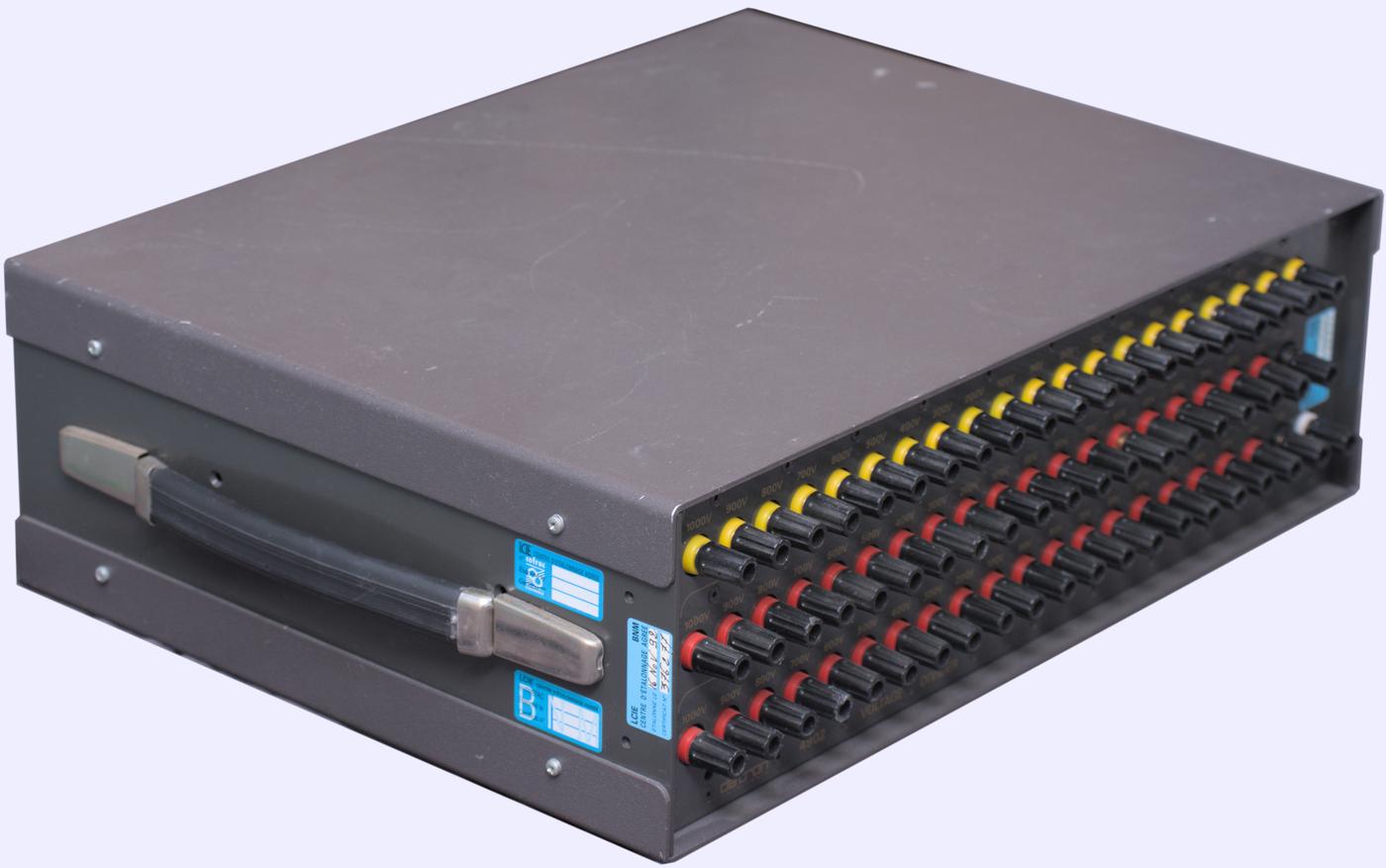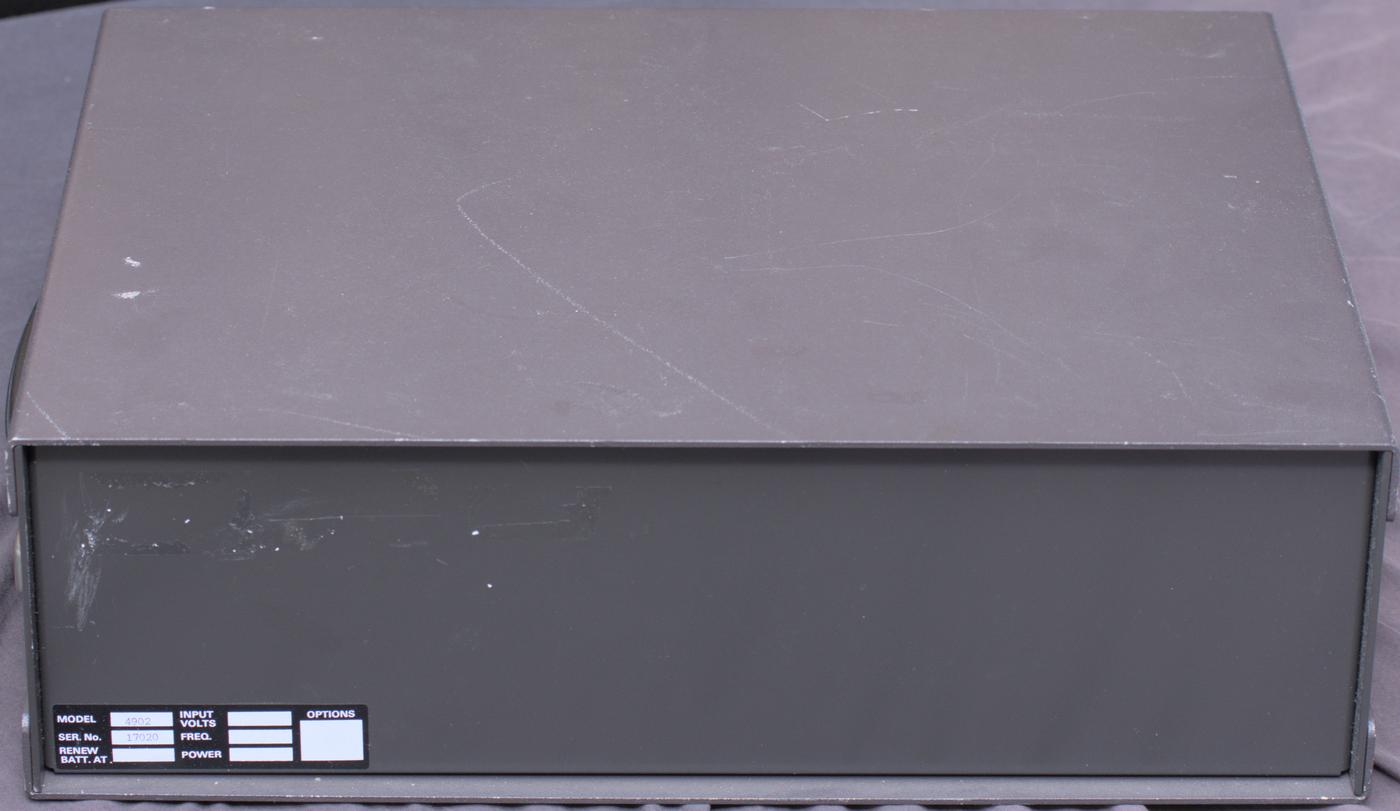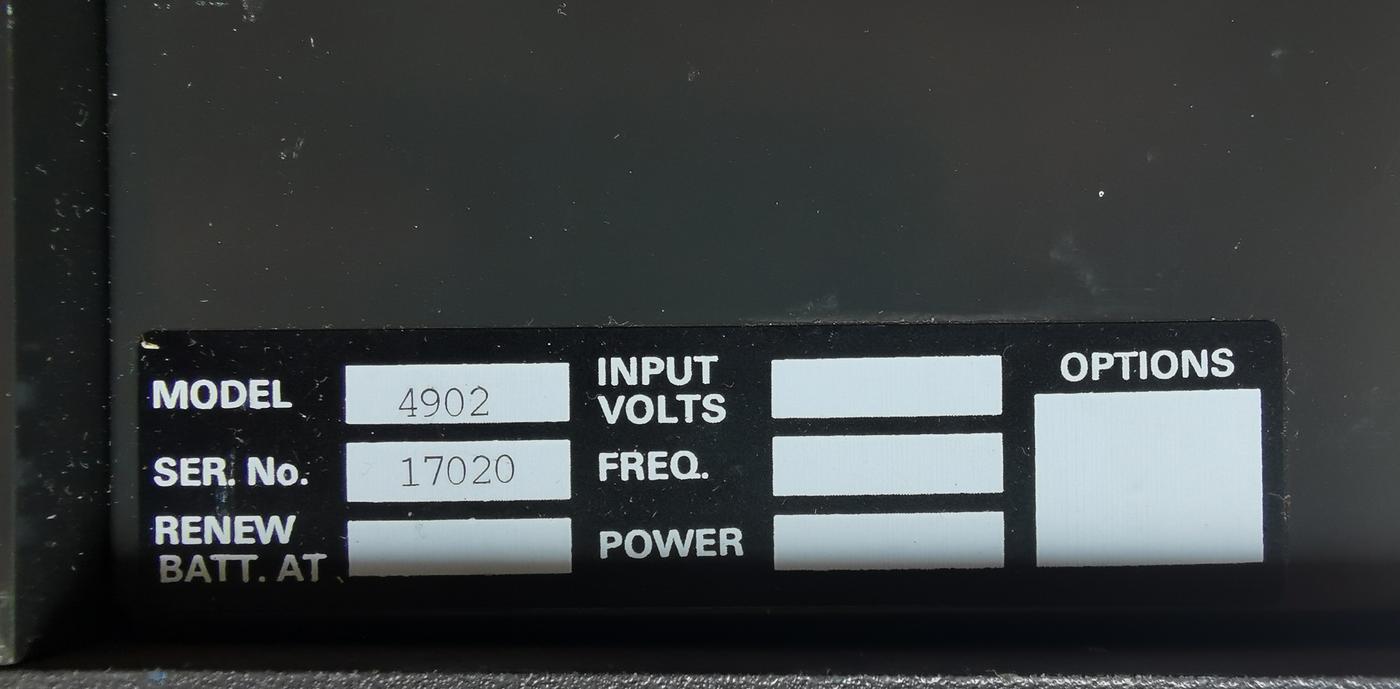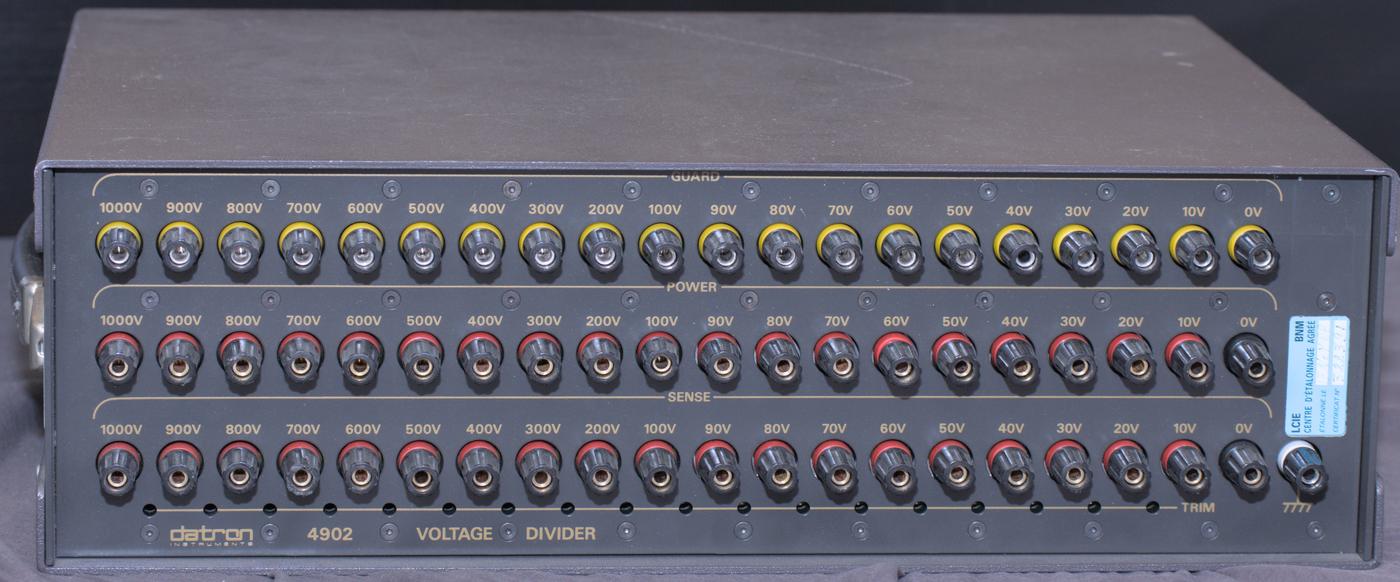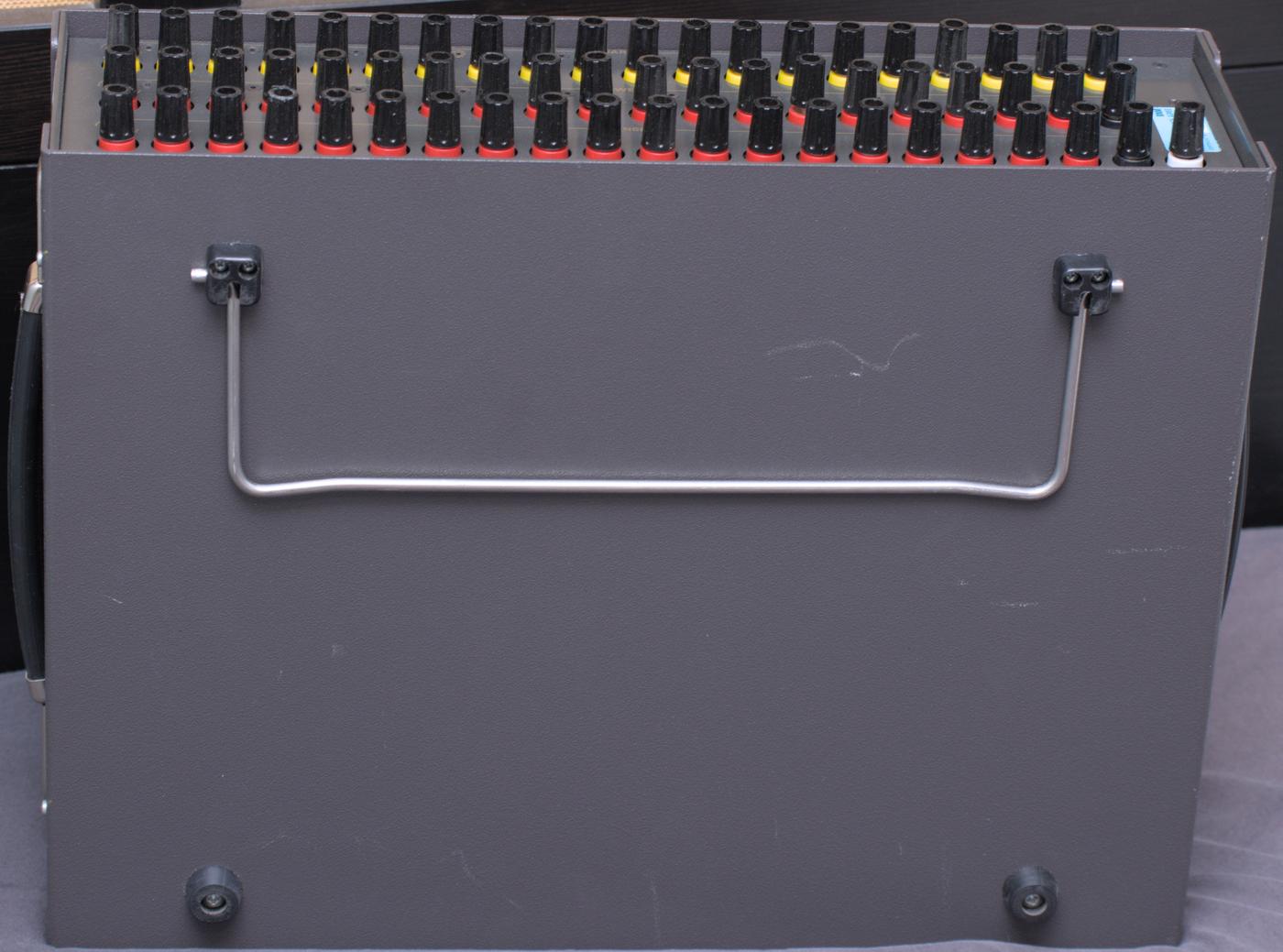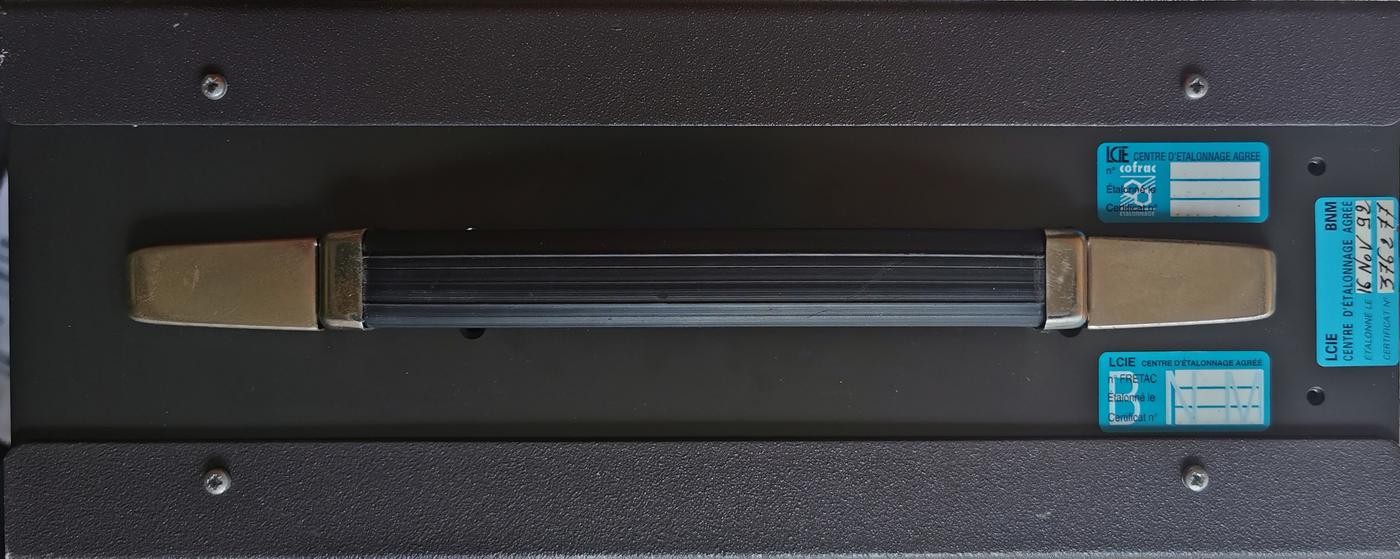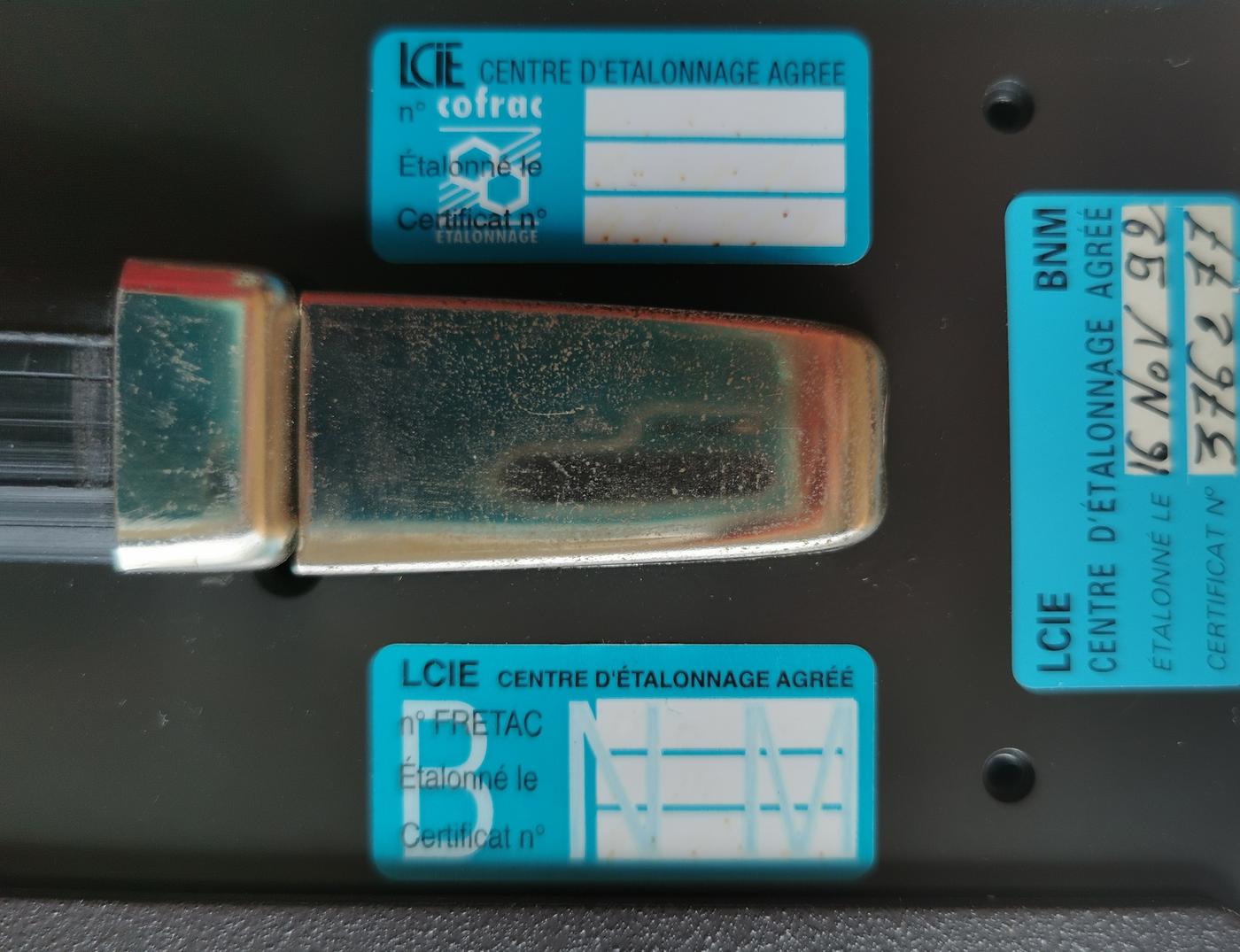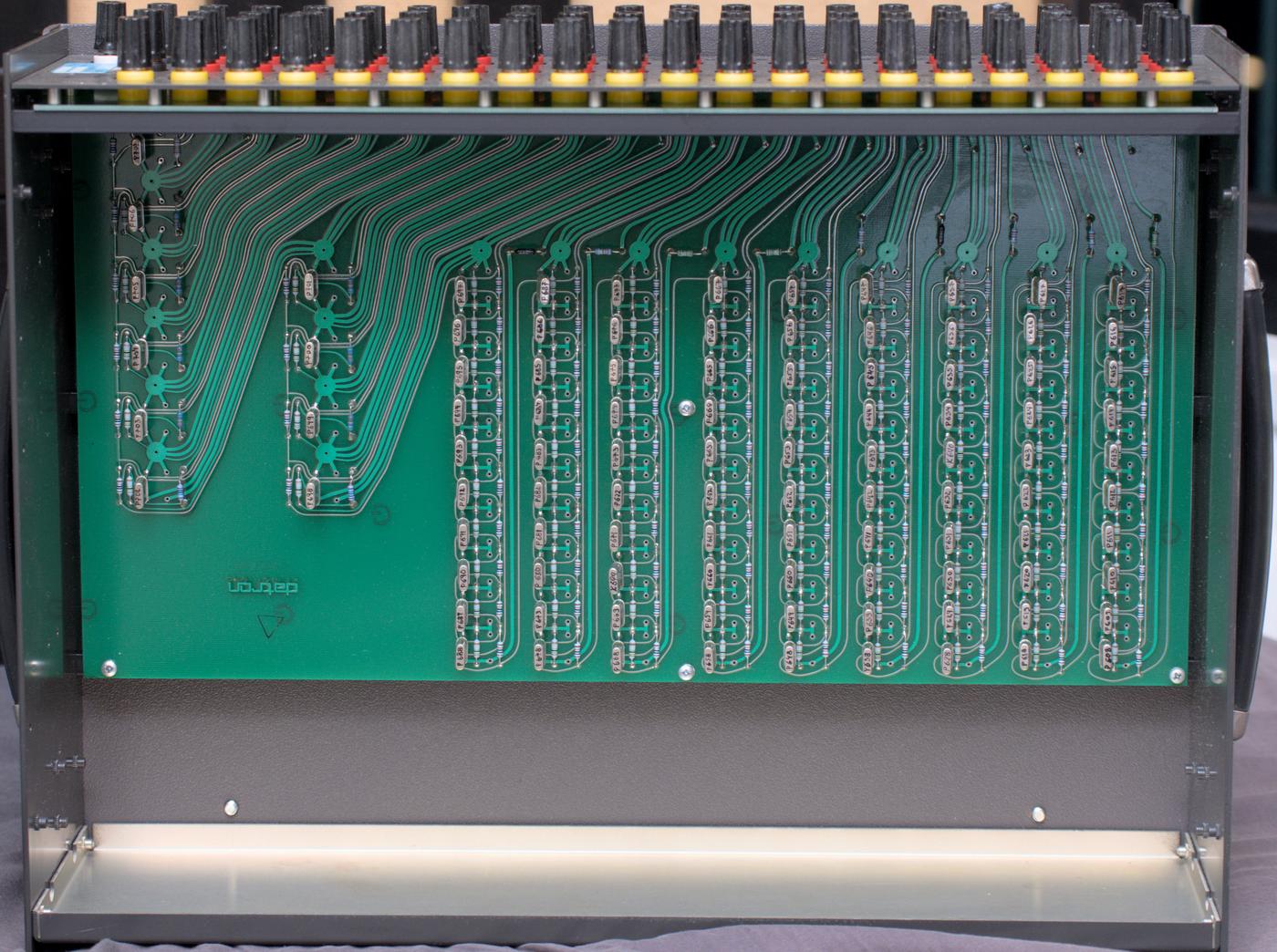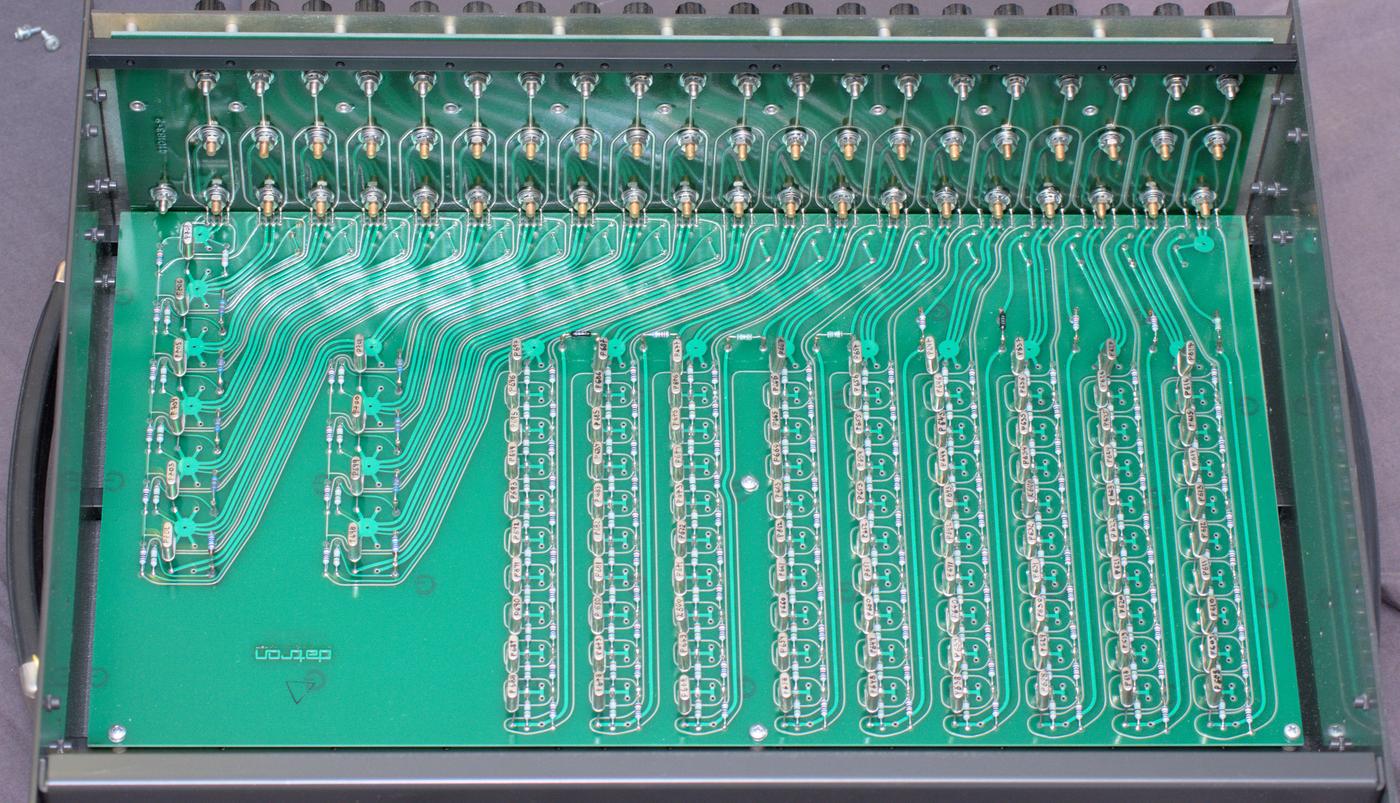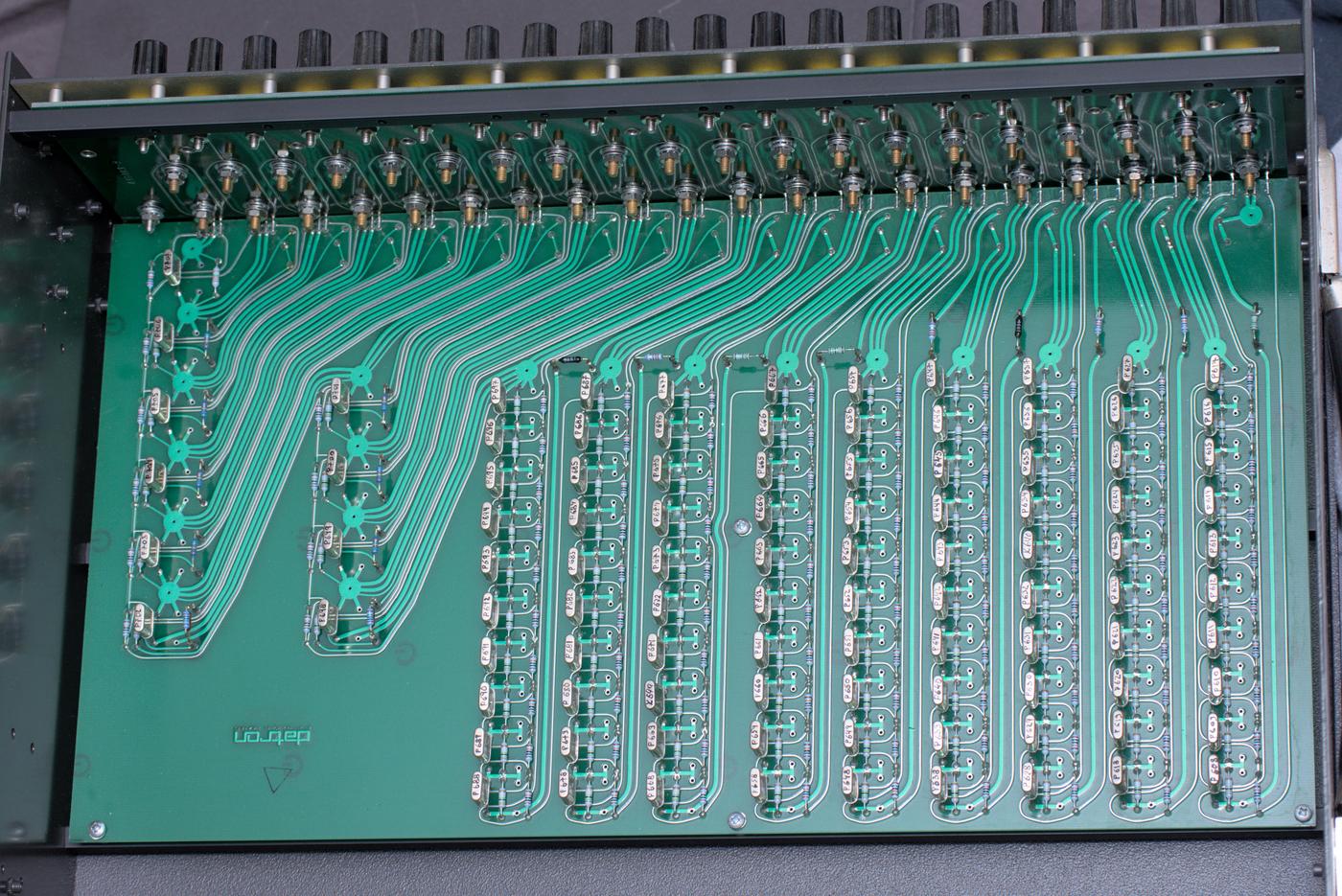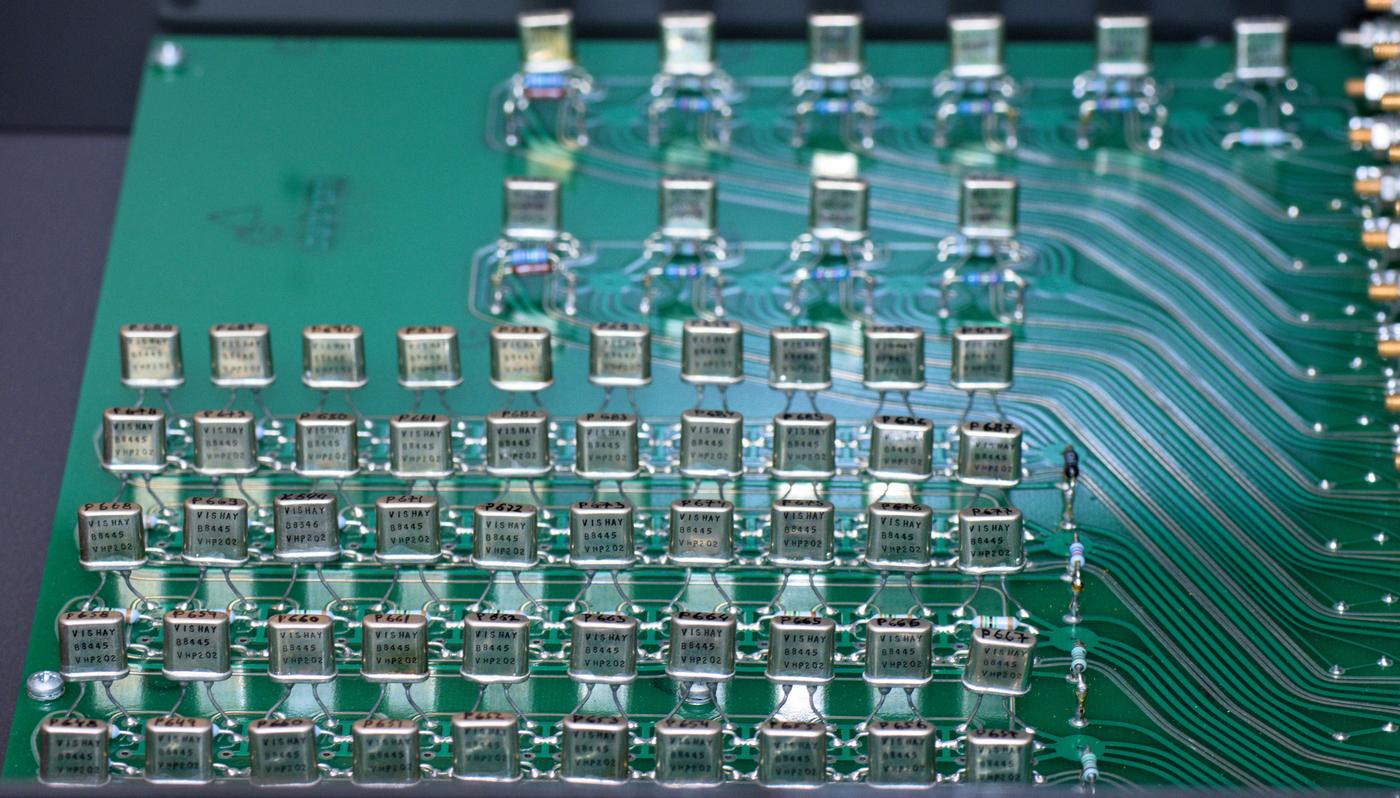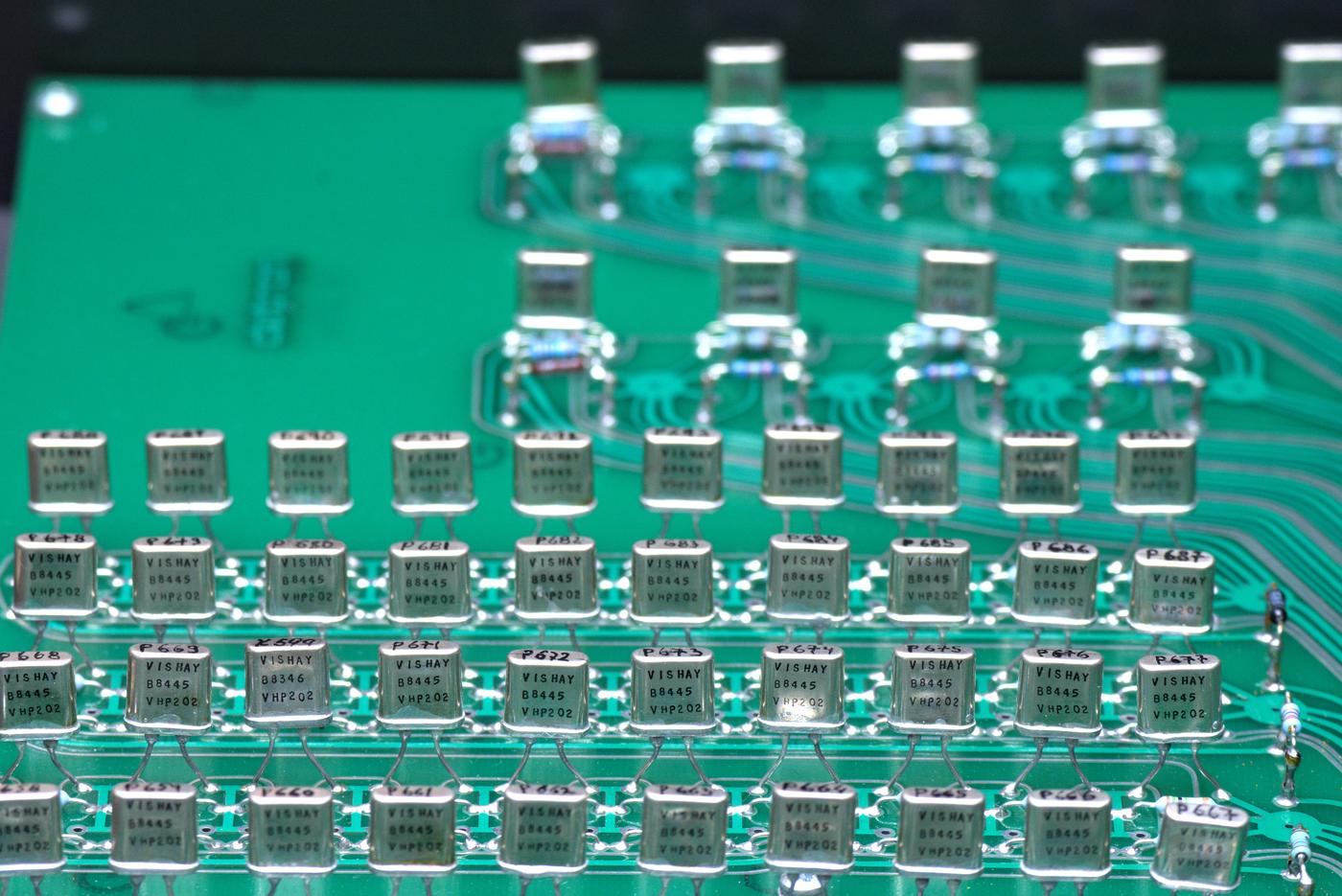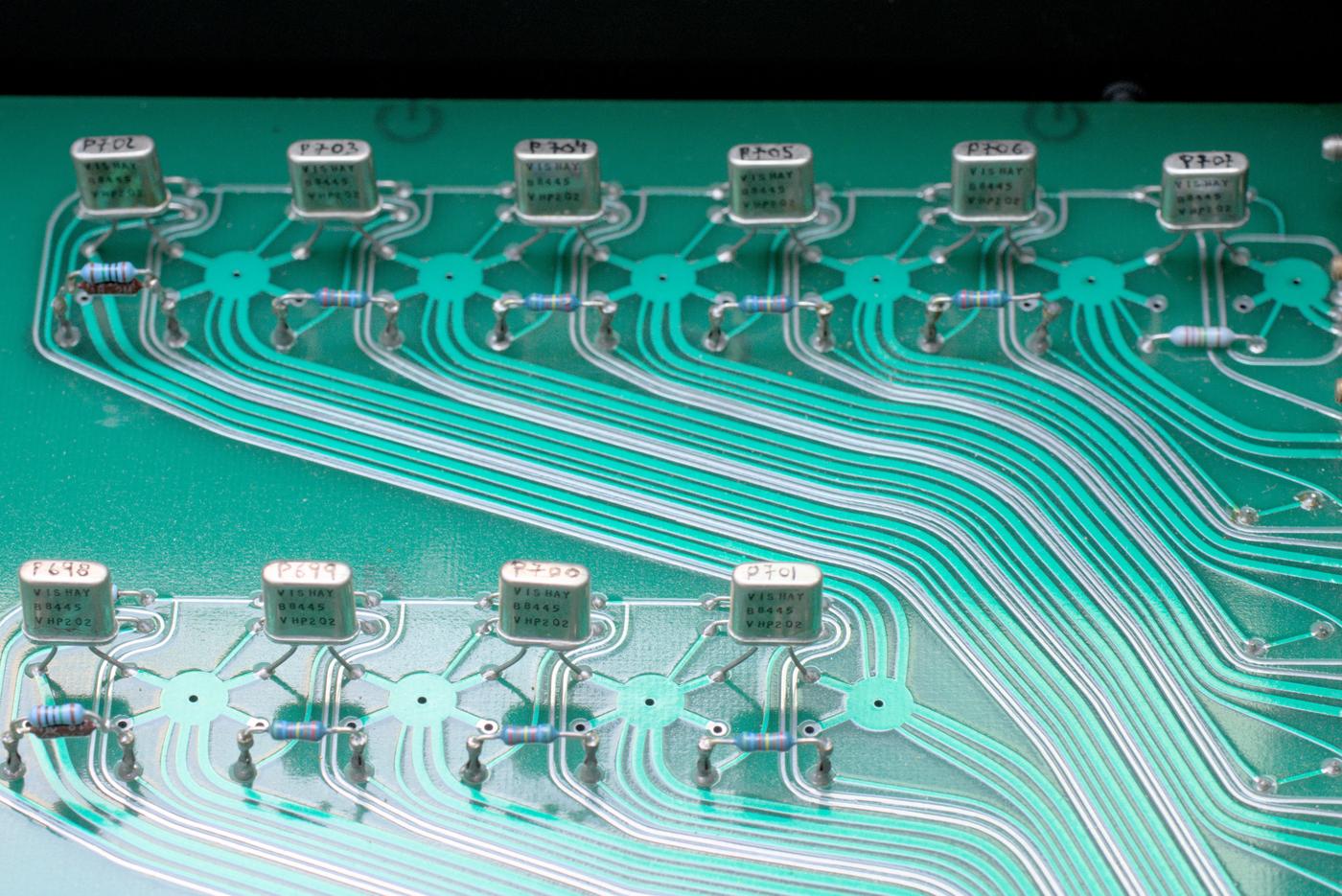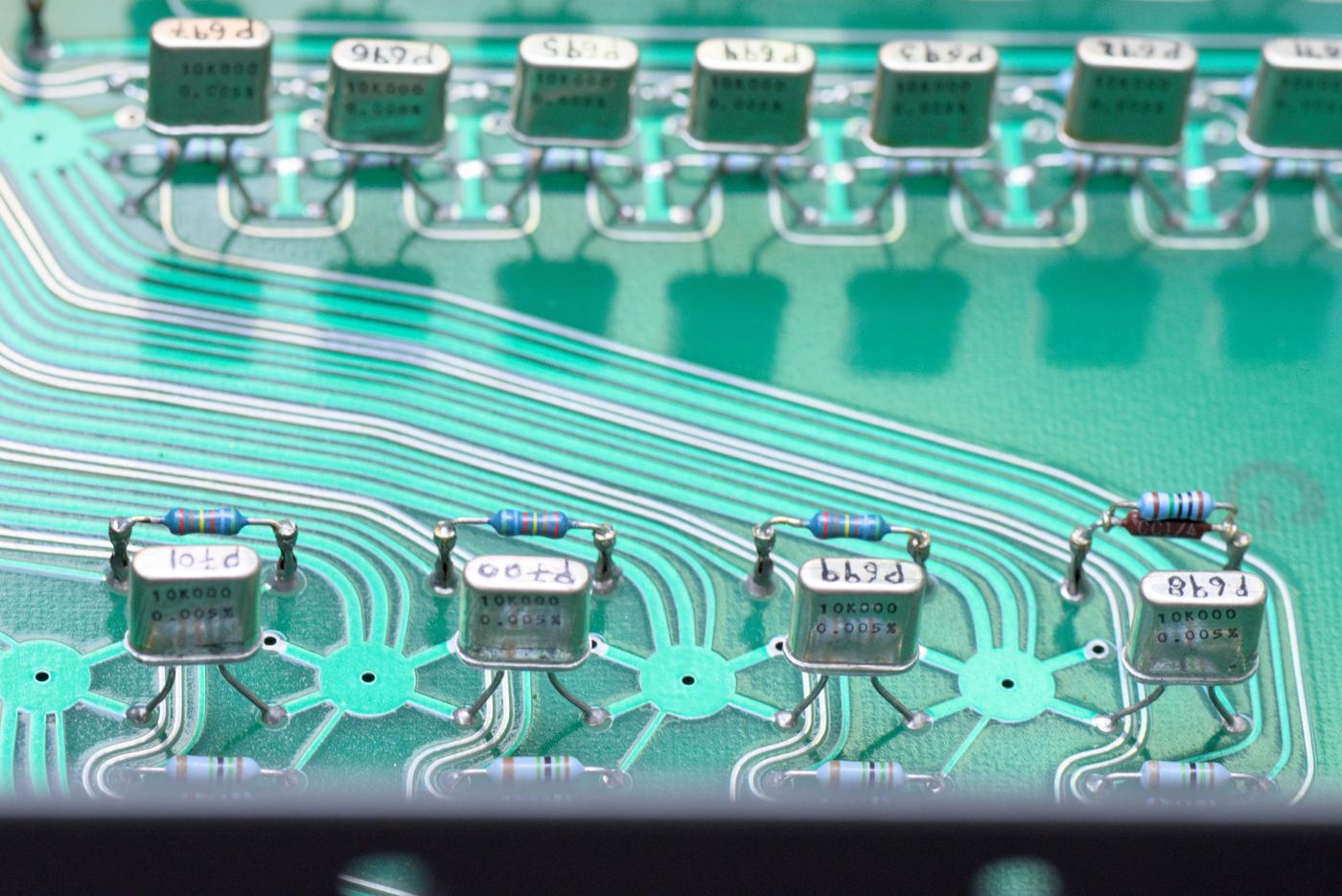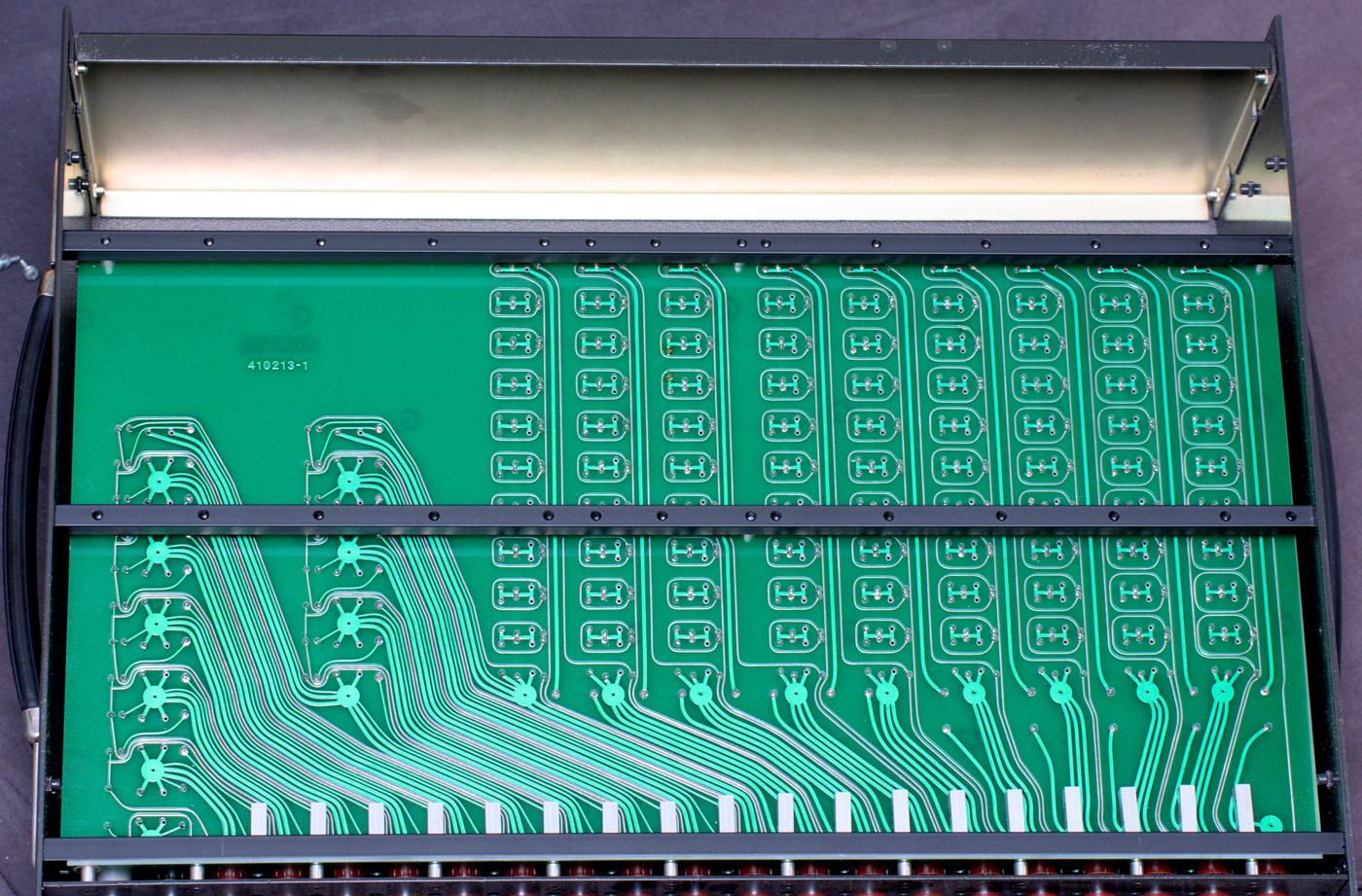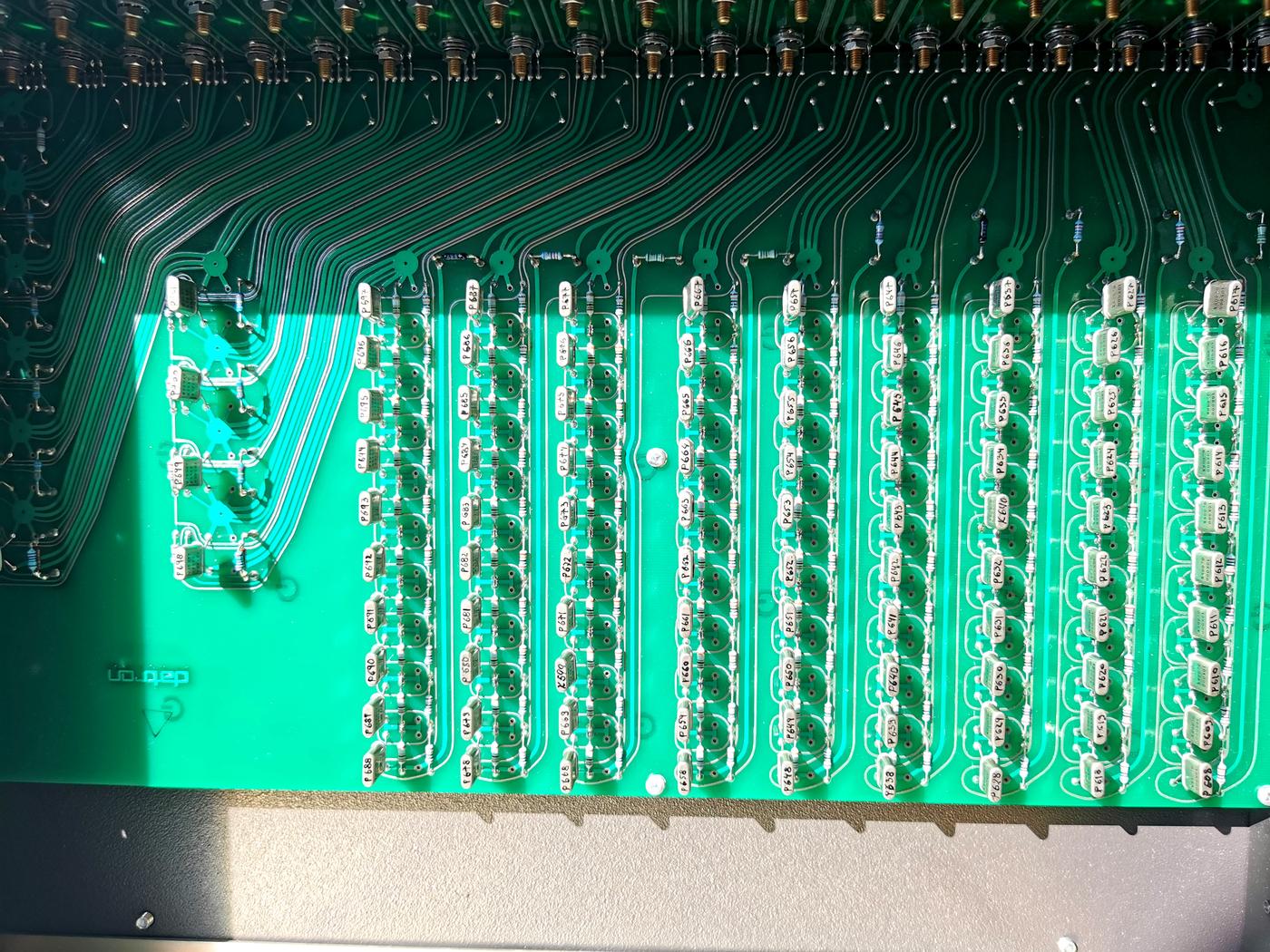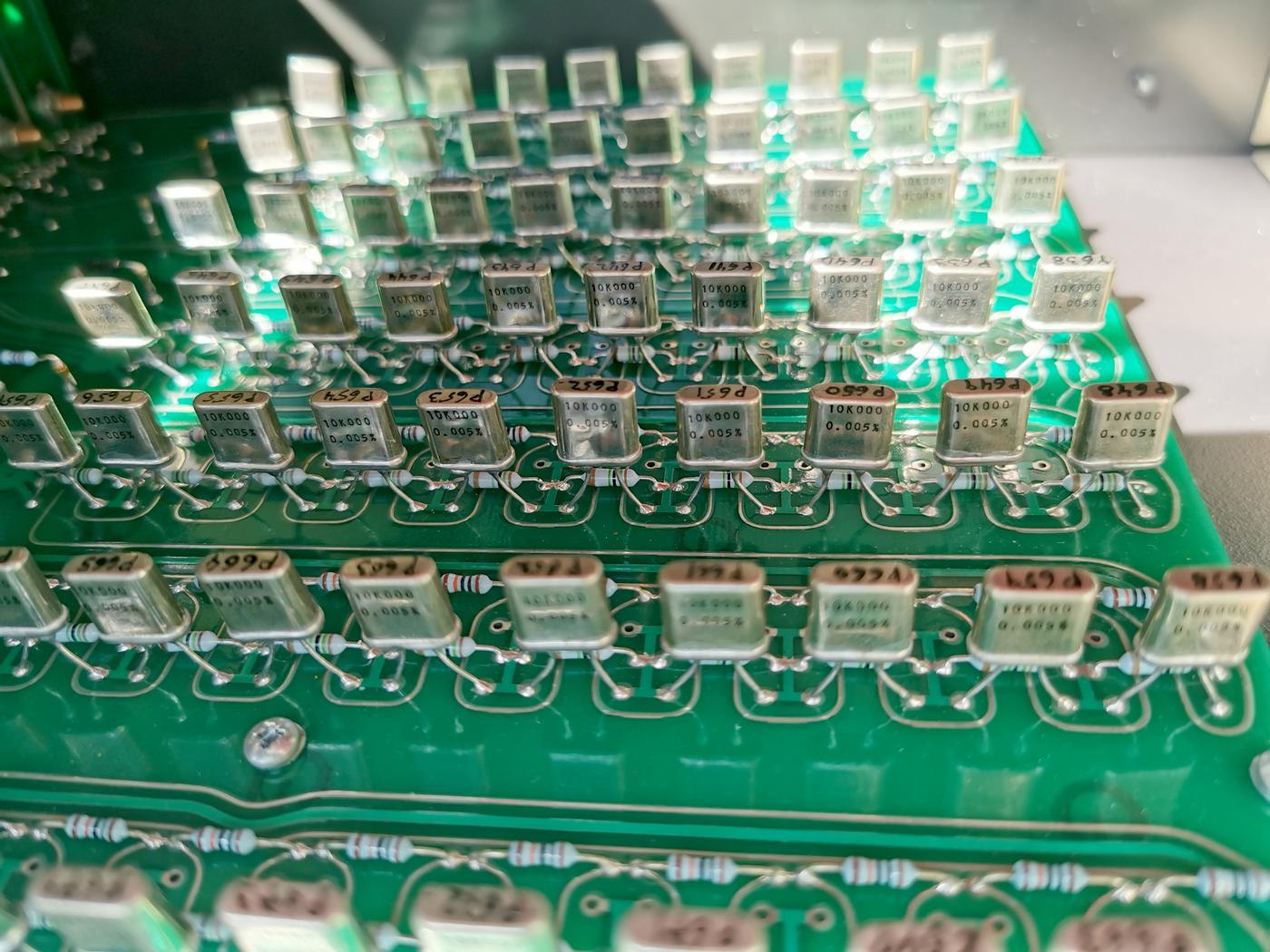Datron 4902
Thanks to alm for provided hi-res photographs of rare 4902 DC Voltage divider. 4902 was a part of Datron 4900 DC voltage calibration system which competed with Fluke 7105A setup, designed to help with transfers of DC voltage from chemical cell standards to various nominal decade values.
Datron 4900 system:
- 4901 Calibration Bridge/Lead Compensator
- 4902 DC Voltage Divider
- 4903 DC Calibration Unit
- 4904 Standard Cell Buffer
Fluke 7105A system:
- 720A Kelvin-Varley Divider
- 750A Reference Divider
- 335A DC Voltage Standard
- 721A Lead Compensator
- 845AB High Impedance Null Detector
Fluke has nice app-note Migrating from DC voltage dividers to modern reference multimeters that covers applications of these dividers and modern alternatives for DC voltage metrology.
Intro
This box has 19 taps resistor network with kelvin connections and guard terminal for each single tap.
Label just shows us serial number 17020 and empty boxes for other unused parameters.
It is fully passive with only resistors inside, so it does not have any power input connectors or anything else at the back.
Front panel is very simple as well with no less than 61 5-way binding posts. Binding posts are fully insulated from metal enclosure for safely and leakage reasons.
Bottom has handle typical Datron-style support and rubber bumpers.
This particular unit was calibrated or was in the ownership of top tier BNM-LCIE laboratory in France.
Bureau national de métrologie Laboratoire Central des Industries has a lot of background in the advanced electrical metrology.
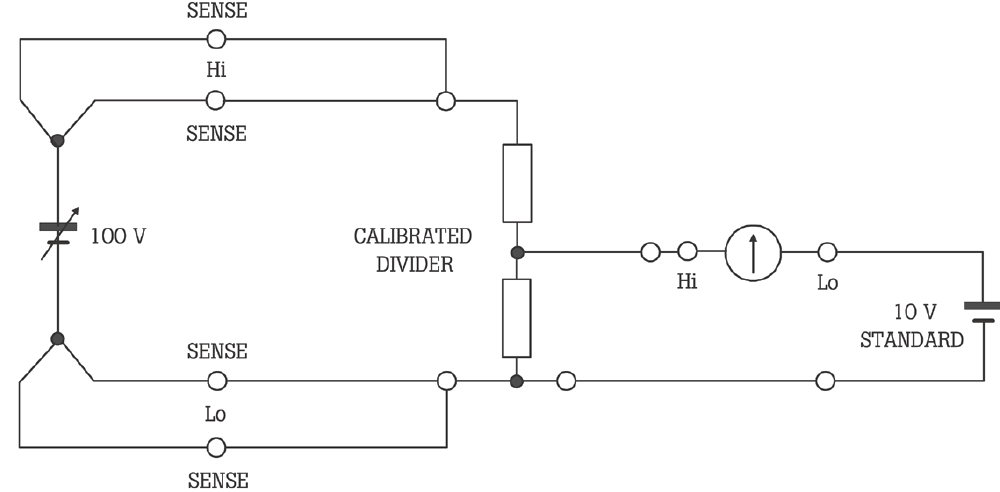
Otherwise there is no much to it to see outside.
Tear-down
Removing top cover reveals two large PCBs filling almost whole internal area of the unit. One PCB has all the resistor networks and mounted horizontally. Second PCB with mounts for all binding posts is perpendicular to main board and bolted to the front panel.
Boards connected together with solder links on the edge.
Main divider resistors are nothing less than Vishay hermetic VHP202 bulk metal foil elements. Low voltage taps use one resistor per tap, while higher taps with 100 V and above use whole 10-resistor strings to spread power dissipation across multiple elements.
Each of the resistor elements also have parallel resistor network for guarding tap.
Guard exposed trace routing surround each tap of divider circuit and prevents errors from the PCB surface leakage, as well as limits capacitive coupling.
All hermetic resistors are same, Vishay VHP202 with date code B8445. This code mean manufactured date on 45th week 1984, good 40 years ago.
Each resistor is 10000 Ω with factory tolerance 50 µΩ/Ω. Using such low value makes this divider relatively simple to operate and calibrate using long-scale modern DMM.
Demands for detector are also more relaxed due to relatively low resistance of taps.
Higher voltage taps contribute as 100 kΩ per tap. This brings total resistance of the Datron 4902 to 1 MΩ.
With applied maximum 1000 V across divider total power dissipation would equal to 1 W, or 10 mW per each VHP202 element. Temperature coefficient of VHP202 elements is usually around ±3 µΩ/Ω/K which also makes this divider very stable over the normal laboratory temperature range, even with heating effects from the power applied to divider.
Cost to replicate this exact divider with such large amount of resistors today would be over 6000 USD, just in resistors and connectors cost. :)
Datron 4901 balance unit
We also got a photo of 4901 unit that was companion to 4902.

Discussion is very welcome thru comment section or at our own IRC chat server: xdevs.com (port 6010, channel: #xDevs.com).
Projects like this are born from passion and a desire to share how things work. Education is the foundation of a healthy society - especially important in today's volatile world. xDevs began as a personal project notepad in Kherson, Ukraine back in 2008 and has grown with support of passionate readers just like you. There are no (and never will be) any ads, sponsors or shareholders behind xDevs.com, just a commitment to inspire and help learning. If you are in a position to help others like us, please consider supporting xDevs.com’s home-country Ukraine in its defense of freedom to speak, freedom to live in peace and freedom to choose their way. You can use official site to support Ukraine – United24 or Help99. Every cent counts.
Modified: April 1, 2024, 4:16 p.m.

